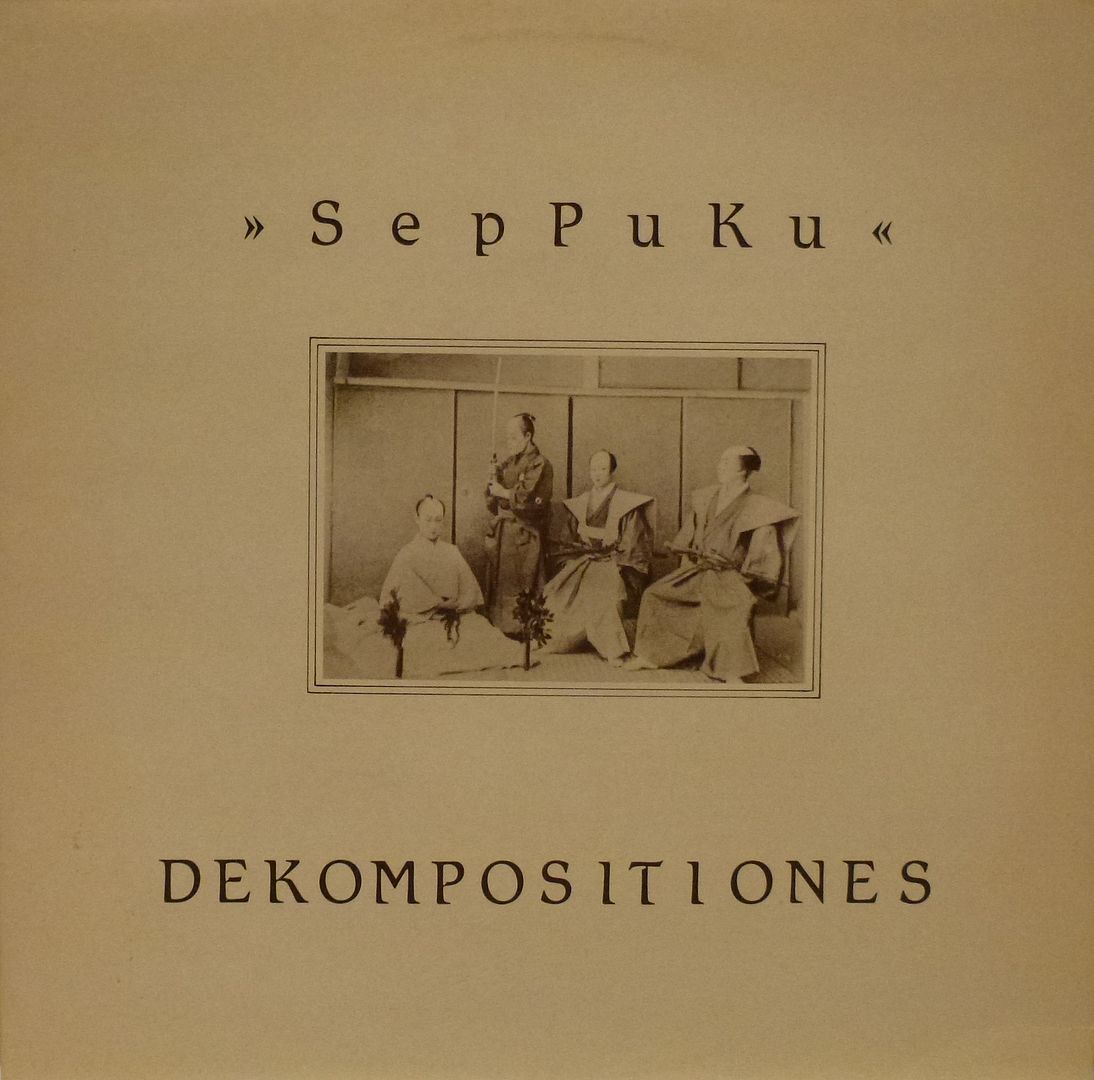
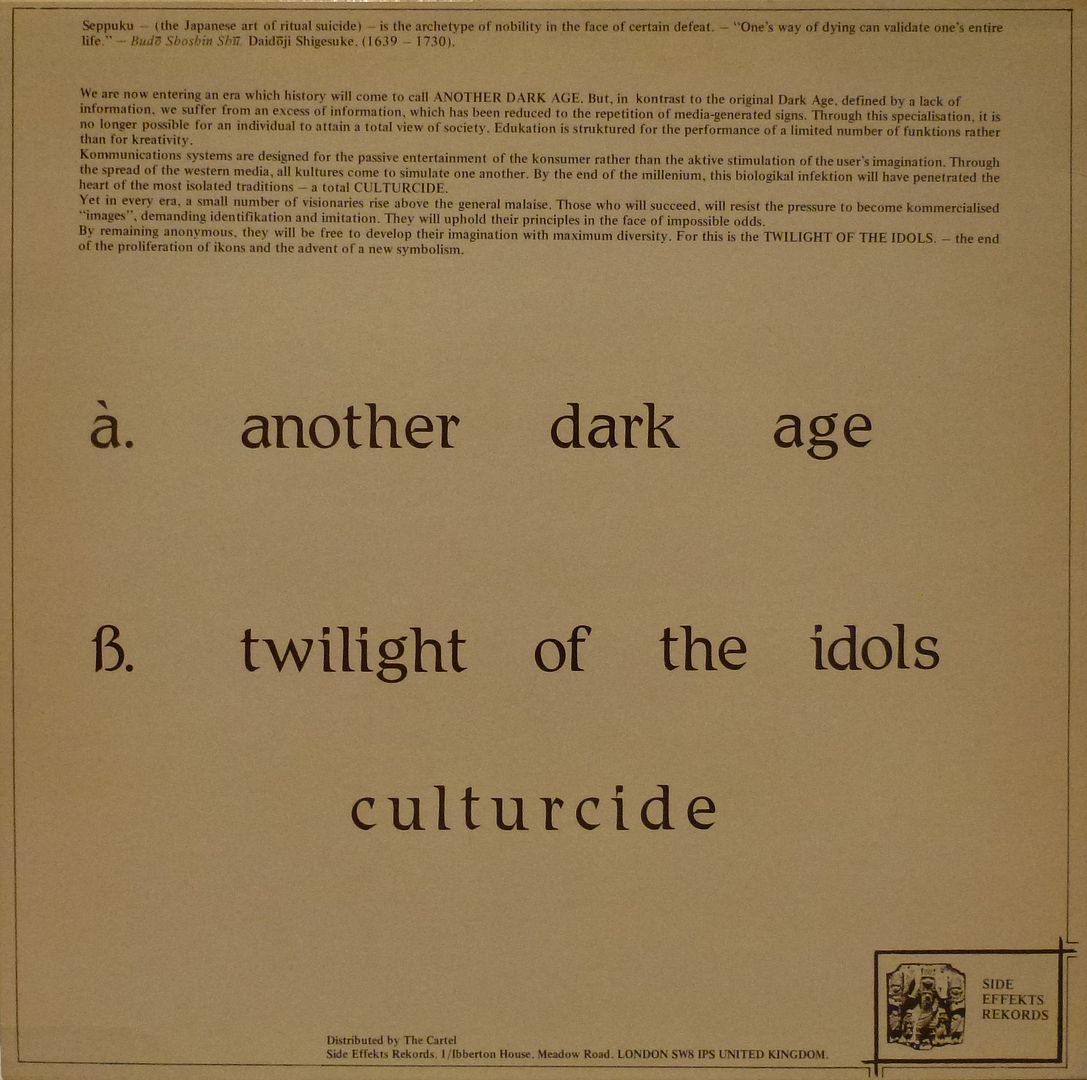
Twilight Of The Idols / Culturecide
For this years KYPP’s zombie apocalypse Halloween post I thought I would upload the atmospheric 12″ single by SepPuKa from 1983.
Abbreviated to the more common S.P.K, SepPuKa was just one name for this industrial outfit used throughout the years. Other posts already on this KYPP site by S.P.K include the single by Surgical Penis Klinik on Industrial records as well as the debut LP by System Planning Korporation and the second LP by Sozialistiches Patienten Kollektiv both released on Side Effekts records. Search for these releases via the search function.
The tracks on this 12″ single are strong on chants and percussion. The earlier work by S.P.K tended to be power electronics industrial white noise and screaming, nothing wrong with that.
This 12″ single by S.P.K recorded with Sinan Leong on vocals who had recently joined the band, bridges the gap between the old industrial S.P.K and the newer kettle drum dance orientated outfit. Still a load of metallic percussion on this marvellous record to keep the grey and black clad industrial followers happy…
Photographs of S.P.K performing in Berlin 1984 courtesy of Thomas Meyer. The text on S.P.K ripped from the ghoulish wikkipeardear… The text on the Japanese ritual of seppuka (the name S.P.K used for this 12″ single release) courtesy of Wayne Muromoto.
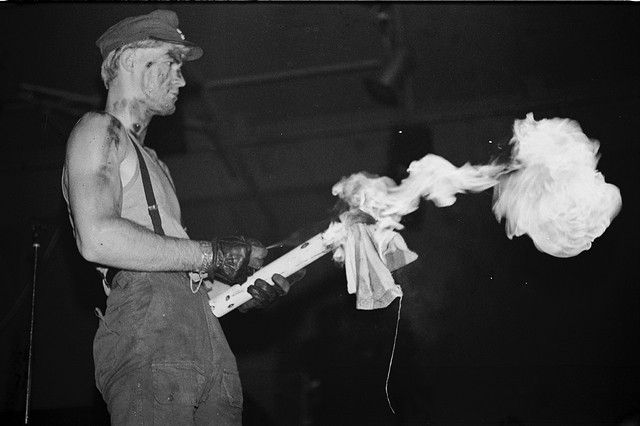
SPK was formed in 1978 in Sydney when New Zealand-born Graeme Revell (aka “EMS AKS”, “Operator”, “Oblivion”) met Neil Hill (aka “Ne/H/il”). Revell was working as a nurse on a psychiatric ward at Callan Park Hospital where Hill was a schizophrenia out-patient. Hill and Revell shared a house and an interest in the manifesto of the German radical Marxist group known as the Sozialistisches Patienten Kollektiv (SPK). The duo were influenced by Kraftwerk, Can, Neu!, Faust, and John Cage – they started playing their own variety of industrial music as SPK. According to rock music historian, Ian McFarlane the acronym SPK is variously given as “SoliPsiK, SepPuKu, Surgical Penis Klinik, System Planning Korporation and Sozialistisches Patienten Kollektiv”. The band recruited two teenagers, Danny Rumour on lead guitar and David Virgin on bass guitar (both ex-Ugly Mirrors, and went on to form Sekret Sekret), on early recordings by SPK in 1979. In that year they independently released three 7″ pressings: “SoliPsiK” as a three-track extended play in April, “Factory” as a single in August and “Mekano” in November.
Dominik Guerin (aka “Tone Generator”) joined on synthesisers in 1980, and later concentrated on the band’s visual content. In May they issued an EP, Meat Processing Section, as Surgical Penis Klinik. Without Hill, SPK relocated to London where Guerin and Revell recorded their debut album, ‘Information Overload Unit’ in a Vauxhall squat with the help of Revell’s brother Ashley Revell (aka “Mr.Clean”) and Mike Wilkins (guitar, bass guitar, backing vocals). The album’s cover has System Planning Korporation with the initials SPK highlighted in red. In June 1980 they issued the single, “Slogun”, with lyrics inspired by the Marxist manifesto: “Kill, Kill, Kill for inner peace / Bomb, Bomb, Bomb for mental health / Therapy through violence!” McFarlane suggested “the album’s harsh, thumping sound appealed to fans of Throbbing Gristle and early Cabaret Voltaire”. Allmusic’s John Bush felt it was “[a] noisy record basically comprised of guitar feedback, synthesizer distortion and rigid drum programming”. Other musicians working with SPK included James Pinker (drums, percussion) and Karel van Bergan (violin, vocals), who toured with them to the United States. In July 1981 in Australia, the M Squared label released another single “See Saw”. The cover depicts SoliPsiK with members given as Kitka (aka Kit Katalog), Sushi (aka Margaret Hill), Charlyiev (aka Paul Charlier) and Skorne (N Hill). Both tracks are co-written by Charlier and Hill.
In 1982 SPK’s Guerin and Revell were joined by Brian Williams (aka Lustmord), John Murphy of Forresta di Ferro (aka “Kraang”) and Derek Thompson (who later had a brief stint in The Cure and went on to record as Hoodlum Priest). SPK’s second album, Leichenschrei (English: The Scream of the Corpse) in 1982 shows Sozialistiches Patienten Kollektiv (English: Socialist Patients’ Collective).
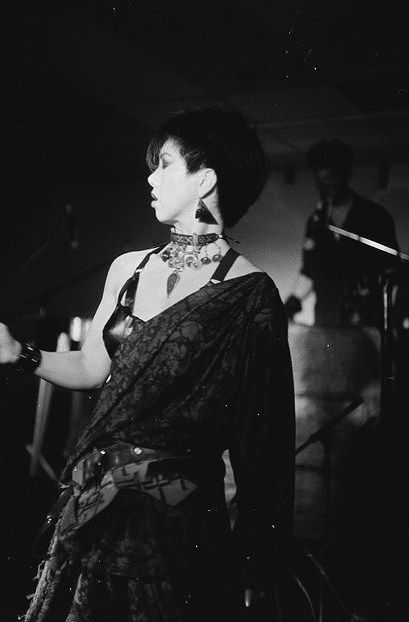
After its recording they were joined by Sinan Leong on vocals who had initially auditioned for a planned SPK side-project Dance Macabre. Leong and Revell later married. In 1983 Thompson left SPK because Revell “wanted to make a very commercial sounding album which I did not”. McFarlane found that “SPK had softened the approach somewhat with discernible synth melodies and dance beats coming to the fore amongst the noise”.
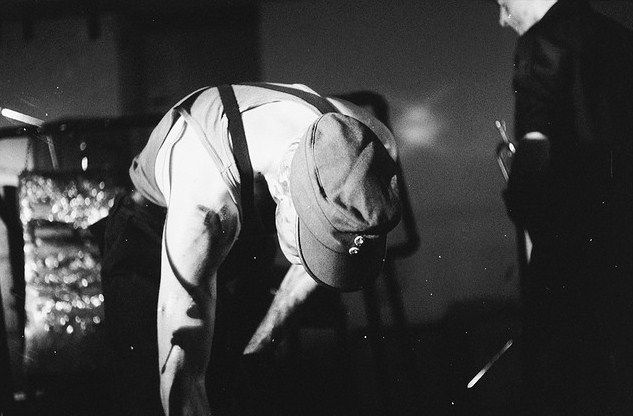
In August 1983, the group issued a compilation album, Auto Da Fé, showing SepPuKu written with SPK in red capital letters. It included three studio tracks recorded in 1981. Bush suggested the album was the “beginning of a more organized approach for SPK material, Auto Da-Fé presents an intriguing industrial-disco fusion, reminiscent of prime contemporary material by Cabaret Voltaire and DAF … Although fans probably thought of it as an unconscionable crossover attempt, it’s still quite experimental in retrospect”. The three-track EP, Dekompositiones (also by SepPuKu) followed soon after. Its tracks were added to a later version of Auto Da Fé.
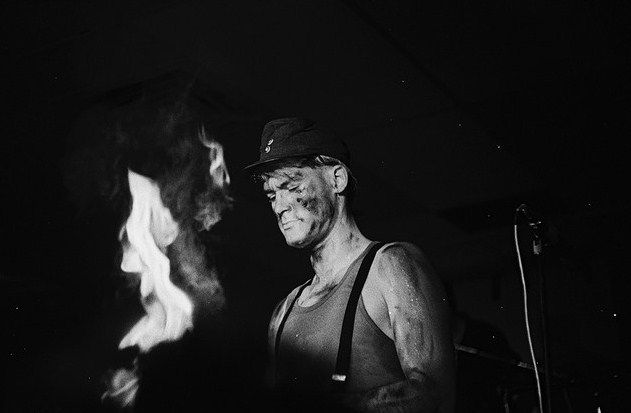
In early February 1984, just before his 28th birthday, Neil Hill committed suicide. Two days later his wife Margaret Nikitenko died as a result of complications from anorexia. In March SPK issued another single, “Metal Dance”, which was co-written by Revell, Leong and Thompson. SPK returned to Australia for a tour and recorded their third album ‘Machine Age Voodoo’ in Sydney which was issued in 1984 on WEA Records. For the album, SPK’s Revell and Leong were joined by Jeff Bartolomei on keyboards, Mary Bradfield-Taylor on vocals, Graham Jesse on saxophone, James Kelly on guitar, Sam McNally on keyboards and Phil Scorgie on bass guitar. McFarlane saw the album as “mixed mainstream disco-pop and sweet vocals with electronic experimentation (sort of like Blondie meets Kraftwerk)”. While Bush felt it was “another leap towards dance-rock and away from the group’s industrial past”. The album spawned a single, “Junk Funk” in 1985.
The Ritual of Seppuku

The ritual of seppuku varied from age to age in Japan. It was first recorded at the end of the Heian period, when a samurai from the Minamoto was in a losing battle and fell on his sword, killing himself while around him the yashiki burned to the ground. Later, it became codified as a dignified and less unsavoury way to die than to face capture and torture. We’re talking Dark Ages here, when all over Europe and Asia torture and mutilation was not at all an uncommon fate for the loser.
By the Sengoku period, seppuku had evolved into what has been codified as seen in rather well-known Iai Ryu like the Muso Jikiden Eishin-ryu and Muso Shinden-Ryu. I also studied Takeuchi-ryu batto-iai, and so the following comments are based on what my Sensei in Japan from the Eishin-ryu and Takeuchi-ryu said about the subject, besides some reading in the Japanese texts.
Seppuku on the battlefield was what you could make do with; i.e. if you didn’t have time to take off your armour, you’d just slit the veins in your neck or fall on your sword. If you had time and it was a formal affair, you dressed all in white to symbolize purity. You wrote a short poem that had to gently signify your state of mind and the season.
It is said that Lord Asano, the former lord of the 47 Ronin, wrote a junky death poem, which might indicate his immaturity and lack of self-discipline, which made him attack Lord Kira and start the whole blood vendetta.
You would be either in a Tatami room but more likely on a gravel clearing in a garden. There would be about three attendants from your lord and / or the shogun to observe the ritual and to file a report, and various sundry attendants as well as the kaishaku, or the one who in other posts was called the “second.”
You then had a raised tray of unlacquered wood presented to you as you sat in seiza, made only for that occasion and then thrown away. On the tray would be a sheaf of washi, white Japanese paper, and on top of that would be small trays of foodstuffs and a low, wide sake cup. You had a bite to eat to go with your sake alcohol, perhaps as you composed your poem.
So composed, you would then begin the ritual. A low wooden dais with a bare blade on a stack of folded washi paper is presented to you. The shoulders of the outer garment (kamishimo) would be slipped under the knees to keep yourself from falling backwards and ending in a rather undignified position. If possible, the low wooden dais would also be placed under your buttocks, so that you would be leaning slightly forward.
The bare blade is wound in the middle of the paper (it is not in a scabbard or handle because it will be discarded later for being so inauspicious) for gripping.
Cutting yourself took various forms. The most common was a straight horizontal cut across the belly, from left to right, with a sharp pull upwards at the end, thereby creating a flap so the guts could fall out, literally exposing your true intentions (belly and spirit in Japanese language are often synonymous, as it is in Hawaiian. And in English, having no guts is having no conviction). If you were strong enough to do that to the end, you would then lean forward at an exact degree, in proper spinal alignment, without jerking your head up from the pain. Why? Jerking up compresses the neck bones and makes it harder for the kaishaku to cut through the joints. That’s why proper posture is so important in Iai.
When you lean forward, off goes your head; if you were a samurai following proper ritual, your kaishaku would indeed cut only to within a thin span at the front. Blood will gush anyway, it in bad taste to have the head being lopped off. You lopped off heads indiscriminately only when beheading criminals.
Not all samurai were capable of such self-control and strength involved in this kind of Seppuku, and variations evolved. Women could stab themselves in the neck, severing veins and arteries and dying quickly, like samurai who were clad in armour. Women, children and even male samurai could just touch the blade and they could have their heads cut off, if they felt they couldn’t do the actual belly cut. Later, the inauspicious blade on the dais was often totally replaced by a fan or a sakaki branch.
The harder way to commit Seppuku was called jumonji giri. You cut across your belly as in the usual way, then withdraw your blade and then cut straight up the center, creating a cross, or the letter ten (juu) in Japanese.
Historically, the last person to do that was General Nogi, who committed Seppuku at the turn of this century after his beloved emperor died. Dying to follow one’s lord or partner in the afterlife was called jushin. Nogi cut himself in jumonji giri, then buttoned his navy white uniform up primly and died. His wife followed him by stabbing herself in the neck.
It must be noted that being kaishaku was also a very great responsibility. So in the Eishin-ryu, kaishaku is “easy to do in Kata, hard to do in real life.” You had to mix compassion (because you were chosen by the person dying as a close friend who knew you wouldn’t make him / her suffer too long) with strength and technique good enough to cut with one blow.
The sword was held out of the sight of the person dying, to keep the person from getting too nervous. So you raised it just out of the eyesight of the person, and you stood in Hanmi or crouched in chuu-goshi to the left of the person. In some schools, the sword is held at different heights according to the relative status of the person dying, either in a kind of gedan, behind the back, or in Jodan.
After the cut is complete, the sword is wiped with washi and the place is cleaned up. The sword is discarded for being tainted by death. How you cut, its particulars, etc. depends on your ryuha.
Yamada Asaemon was the “shogun’s executioner” and he often performed kaishaku for many samurai who had fallen from grace and had to commit Seppuku Yamada never took money for his service, as he felt taking money for killing someone in so solemn a rite was distasteful and vulgar. He made a living from testing swords. So if you had a sword to be used in a Seppuku, he would test it and certify it and get paid. Then he’d be asked to perform kaishaku. He kept things separate.
Finally, every school that had kaishaku also has a host of kuden, oral transmissions, passed on only directly from master to student. In the Takeuchi-ryu, there are five codified kuden, that deal with various aspects of Seppuku These have been handed down for centuries, even though the need for Seppuku has passed. It’s just part of history and tradition. The kuden deals with particular situations in Seppuku, including the possibility of ranshin, Katana no sabi, and so on.
Halloween history and traditions
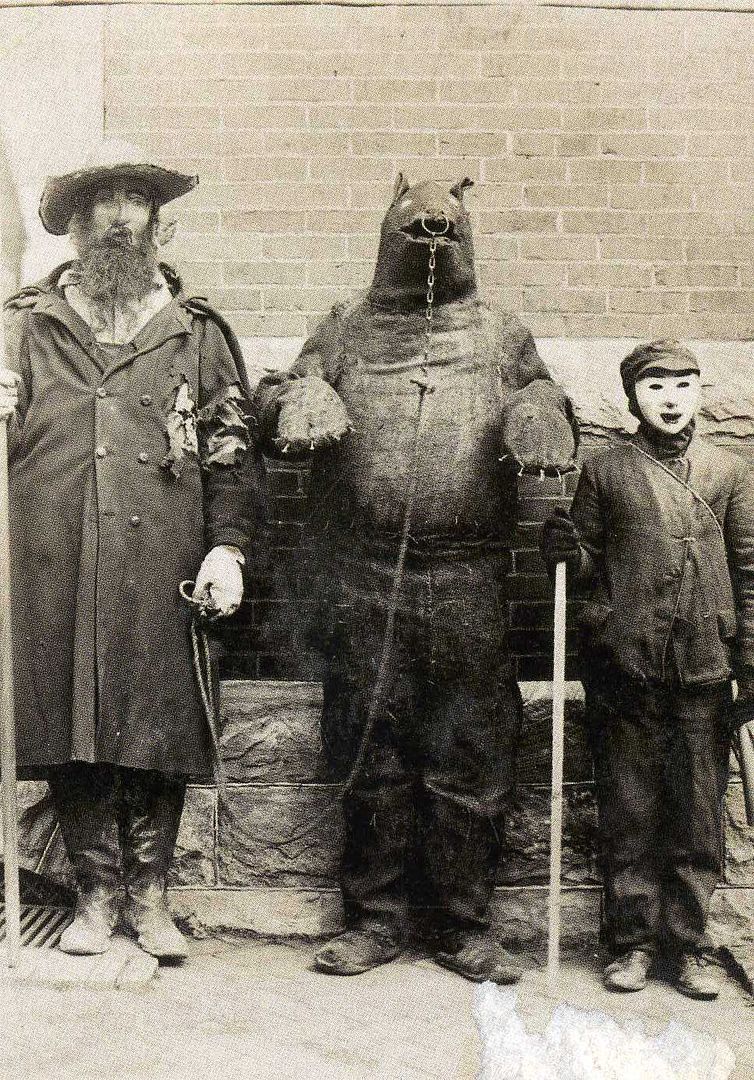
Halloween, celebrated each year on October 31, is a mix of ancient Celtic practices, Catholic and Roman religious rituals and European folk traditions that blended together over time to create the holiday we know today. Straddling the line between fall and winter, plenty and paucity and life and death, Halloween is a time of celebration and superstition. Halloween has long been thought of as a day when the dead can return to the earth, and ancient Celts would light bonfires and wear costumes to ward off these roaming ghosts. The Celtic holiday of Samhain, the Catholic Hallowmas period of All Saints’ Day and All Souls’ Day and the Roman festival of Feralia all influenced the modern holiday of Halloween. In the 19th century, Halloween began to lose its religious connotation, becoming a more secular community-based children’s holiday. Although the superstitions and beliefs surrounding Halloween may have evolved over the years, as the days grow shorter and the nights get colder, people can still look forward to parades, costumes and sweet treats to usher in the winter season.
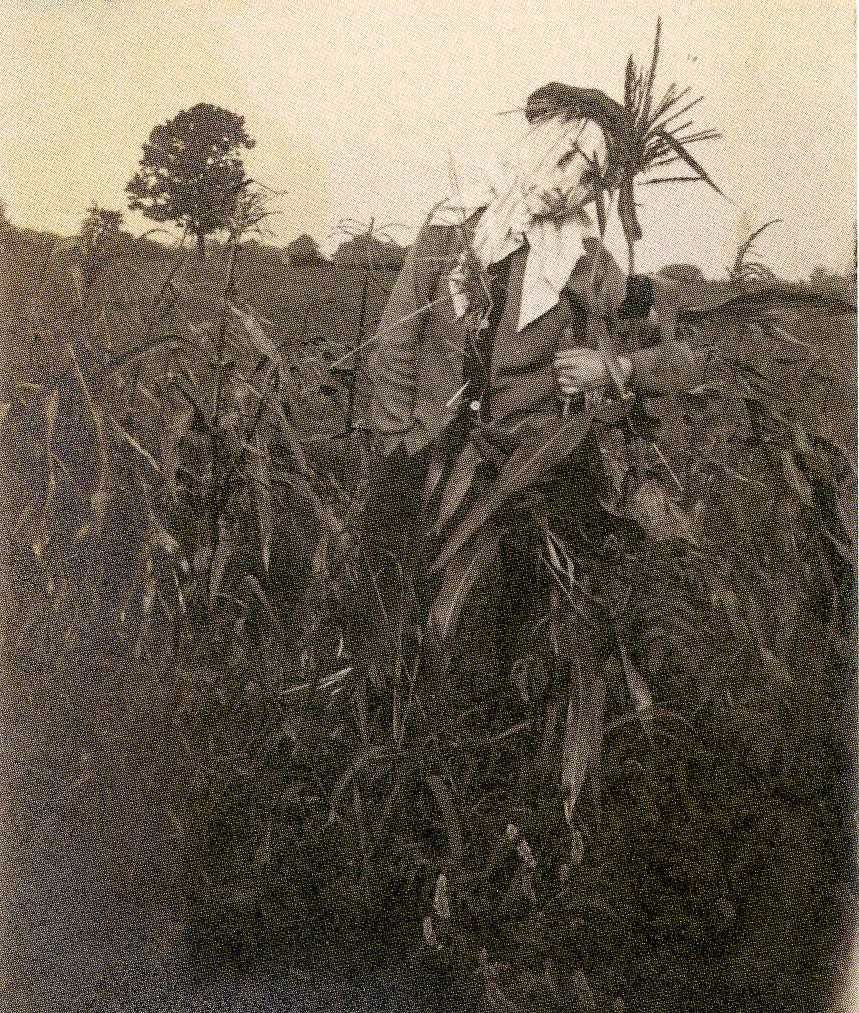
Halloween’s origins date back to the ancient Celtic festival of Samhain.
The Celts, who lived 2,000 years ago in the area that is now Ireland, the United Kingdom, and northern France, celebrated their new year on November 1. This day marked the end of summer and the harvest and the beginning of the dark, cold winter, a time of year that was often associated with human death. Celts believed that on the night before the new year, the boundary between the worlds of the living and the dead became blurred. On the night of October 31, they celebrated Samhain, when it was believed that the ghosts of the dead returned to earth. In addition to causing trouble and damaging crops, Celts thought that the presence of the otherworldly spirits made it easier for the Druids, or Celtic priests, to make predictions about the future. For a people entirely dependent on the volatile natural world, these prophecies were an important source of comfort and direction during the long, dark winter.
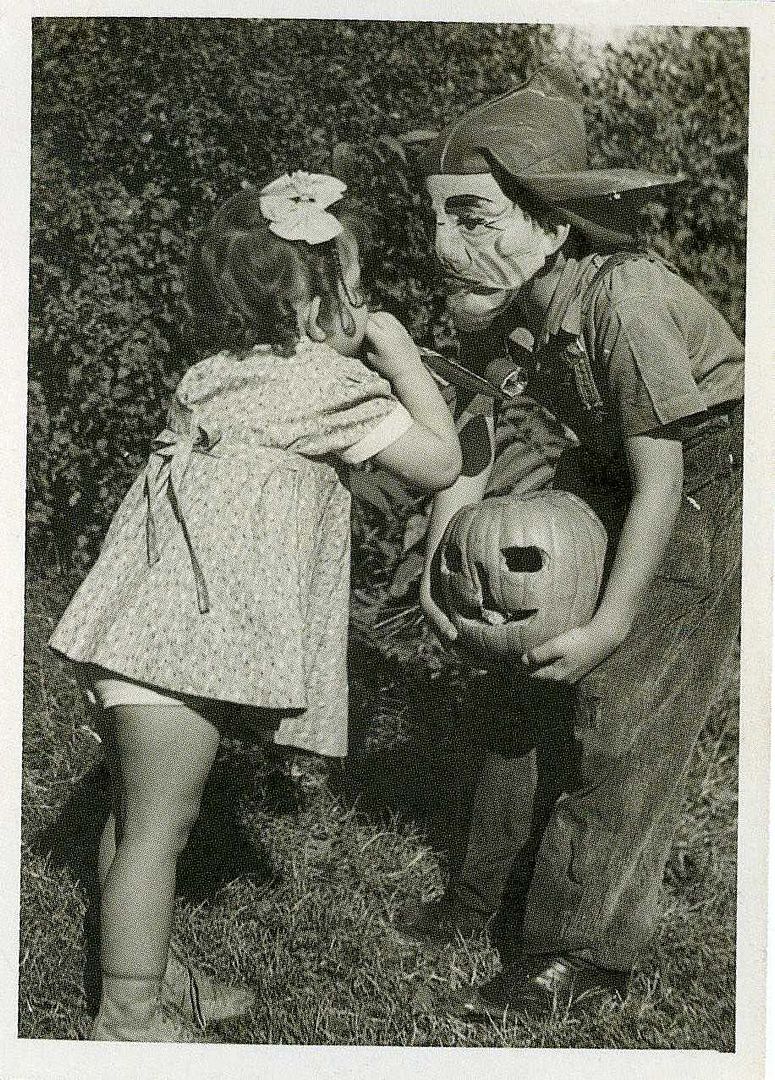
To commemorate the event, Druids built huge sacred bonfires, where the people gathered to burn crops and animals as sacrifices to the Celtic deities.
During the celebration, the Celts wore costumes, typically consisting of animal heads and skins, and attempted to tell each other’s fortunes. When the celebration was over, they re-lit their hearth fires, which they had extinguished earlier that evening, from the sacred bonfire to help protect them during the coming winter.
By A.D. 43, Romans had conquered the majority of Celtic territory. In the course of the four hundred years that they ruled the Celtic lands, two festivals of Roman origin were combined with the traditional Celtic celebration of Samhain.

The first was Feralia, a day in late October when the Romans traditionally commemorated the passing of the dead. The second was a day to honor Pomona, the Roman goddess of fruit and trees. The symbol of Pomona is the apple and the incorporation of this celebration into Samhain probably explains the tradition of “bobbing” for apples that is practiced today on Halloween.
By the 800s, the influence of Christianity had spread into Celtic lands. In the seventh century, Pope Boniface IV designated November 1 All Saints’ Day, a time to honor saints and martyrs. It is widely believed today that the pope was attempting to replace the Celtic festival of the dead with a related, but church-sanctioned holiday. The celebration was also called All-hallows or All-hallowmas (from Middle English Alholowmesse meaning All Saints’ Day) and the night before it, the night of Samhain, began to be called All-hallows Eve and, eventually, Halloween. Even later, in A.D. 1000, the church would make November 2 All Souls’ Day, a day to honor the dead. It was celebrated similarly to Samhain, with big bonfires, parades, and dressing up in costumes as saints, angels, and devils. Together, the three celebrations, the eve of All Saints’, All Saints’, and All Souls’, were called Hallowmas.
Halloween has always been a holiday filled with mystery, magic and superstition. It began as a Celtic end-of-summer festival during which people felt especially close to deceased relatives and friends. For these friendly spirits, they set places at the dinner table, left treats on doorsteps and along the side of the road and lit candles to help loved ones find their way back to the spirit world.
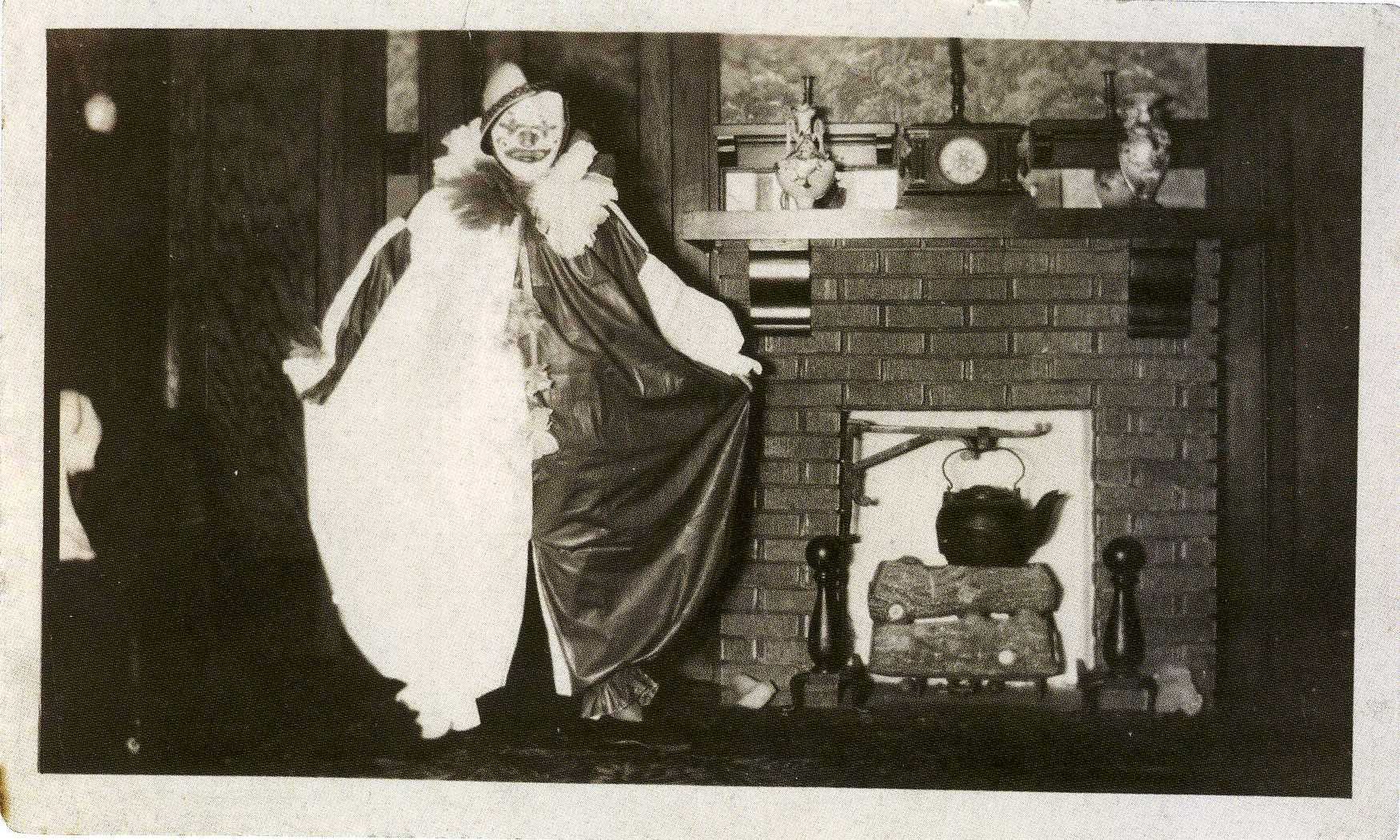
Today’s Halloween ghosts are often depicted as more fearsome and malevolent, and our customs and superstitions are scarier too. We avoid crossing paths with black cats, afraid that they might bring us bad luck. This idea has its roots in the Middle Ages, when many people believed that witches avoided detection by turning themselves into cats. We try not to walk under ladders for the same reason. This superstition may have come from the ancient Egyptians, who believed that triangles were sacred; it also may have something to do with the fact that walking under a leaning ladder tends to be fairly unsafe. And around Halloween, especially, we try to avoid breaking mirrors, stepping on cracks in the road or spilling salt.
But what about the Halloween traditions and beliefs that today’s trick-or-treaters have forgotten all about? Many of these obsolete rituals focused on the future instead of the past and the living instead of the dead. In particular, many had to do with helping young women identify their future husbands and reassuring them that they would someday, with luck, by next Halloween, be married.
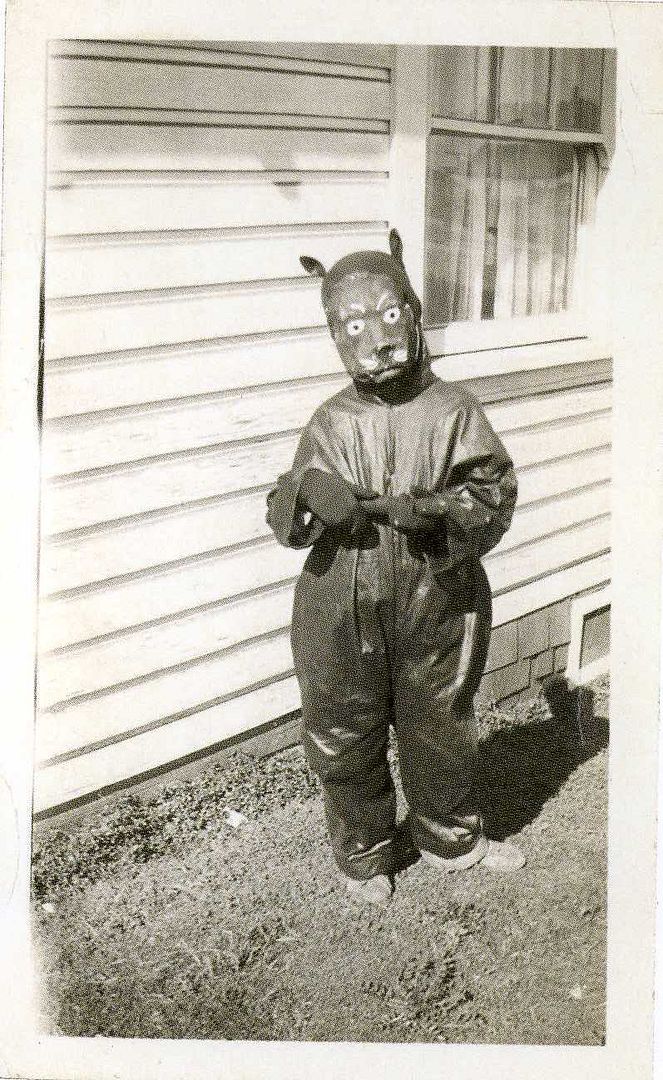
In 18th-century Ireland, a matchmaking cook might bury a ring in her mashed potatoes on Halloween night, hoping to bring true love to the diner who found it. In Scotland, fortune-tellers recommended that an eligible young woman name a hazelnut for each of her suitors and then toss the nuts into the fireplace. The nut that burned to ashes rather than popping or exploding, the story went, represented the girl’s future husband. (In some versions of this legend, confusingly, the opposite was true: The nut that burned away symbolized a love that would not last.) Another tale had it that if a young woman ate a sugary concoction made out of walnuts, hazelnuts and nutmeg before bed on Halloween night, she would dream about her future husband. Young women tossed apple-peels over their shoulders, hoping that the peels would fall on the floor in the shape of their future husbands’ initials; tried to learn about their futures by peering at egg yolks floating in a bowl of water; and stood in front of mirrors in darkened rooms, holding candles and looking over their shoulders for their husbands’ faces.
Other rituals were more competitive. At some Halloween parties, the first guest to find a burr on a chestnut-hunt would be the first to marry; at others, the first successful apple-bobber would be the first down the aisle.
Another day with connections to Halloween is Guy Fawkes Day, celebrated on November 5. Guy Fawkes was a Roman Catholic who planned to blow up the Protestant House of Parliament on November 5, 1606; luckily for the House, he was apprehended and executed. Afterwards, the anniversary of the day was celebrated by building straw effigies, entreating passersby for “a penny for the Guy”, and finally burning “the Guys” in bonfires.
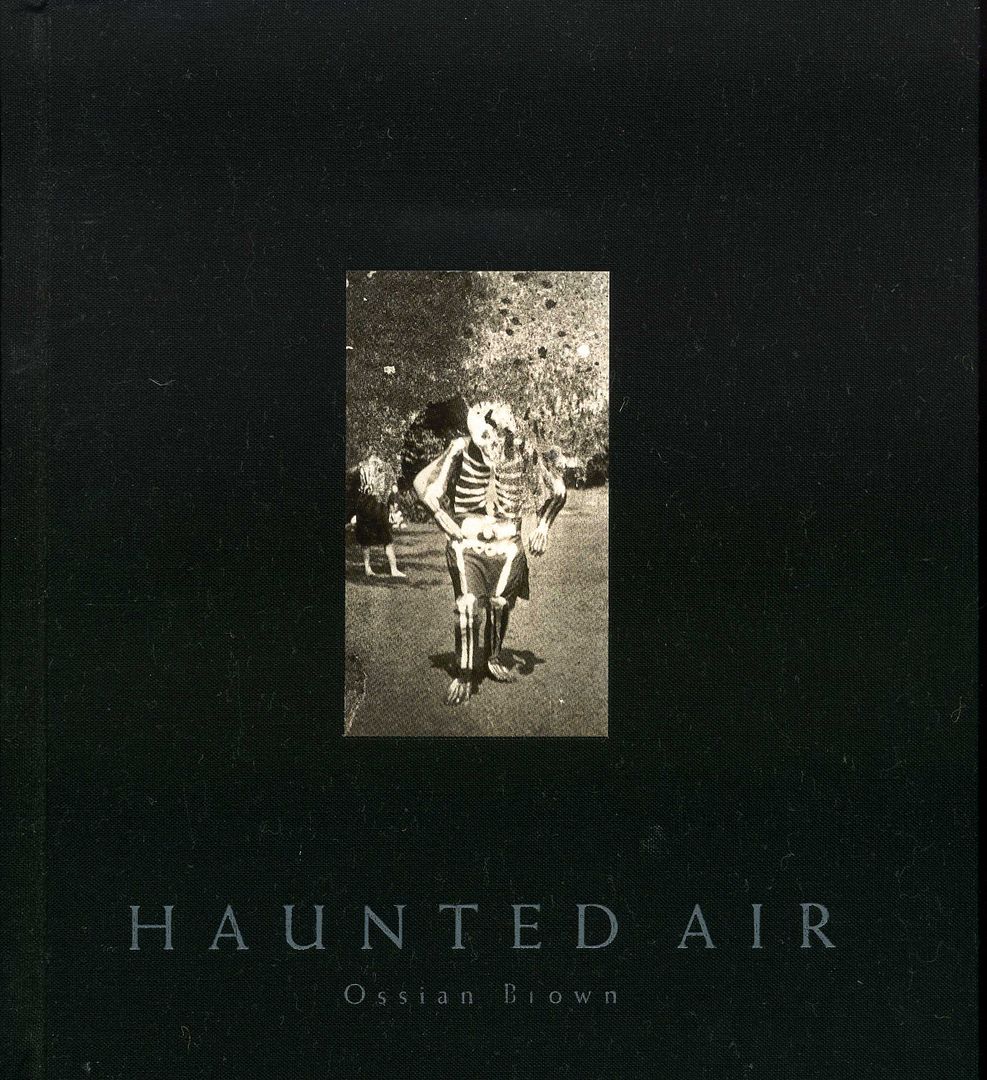
All the period photographs of Halloween children and adults that are displayed on this post are courtesy of the Ossian Brown book ‘Haunted Air’. Ossian has collated dozens of astonishing photographs for this charming and luxurious felt covered hardback book. All the photographs were taken in the United States Of America between the late 19th and the mid 20th century.
I would like to thank Ossian for sending me two signed copies of this beautiful book, one which went straight up to Sheffield towards the eager hands of my younger brother who knew Ossian, as I did also, in the mid 1980s.
Ossian is a member of Cyclobe as well as working in collaboration with David Tibet’s Current 93.
Haunted Air is available now ISBN 9780224089708 published by Jonathan Cape with a forward passage by David Lynch and Geoff Cox.
luggy
October 31, 2012 at 11:03 pmGot a nice long scar on my abdomen from a fucked up appendix operation. Convinced many a gullible fool over the years at parties that it was a result of a failed attempt at Seppuku 😉